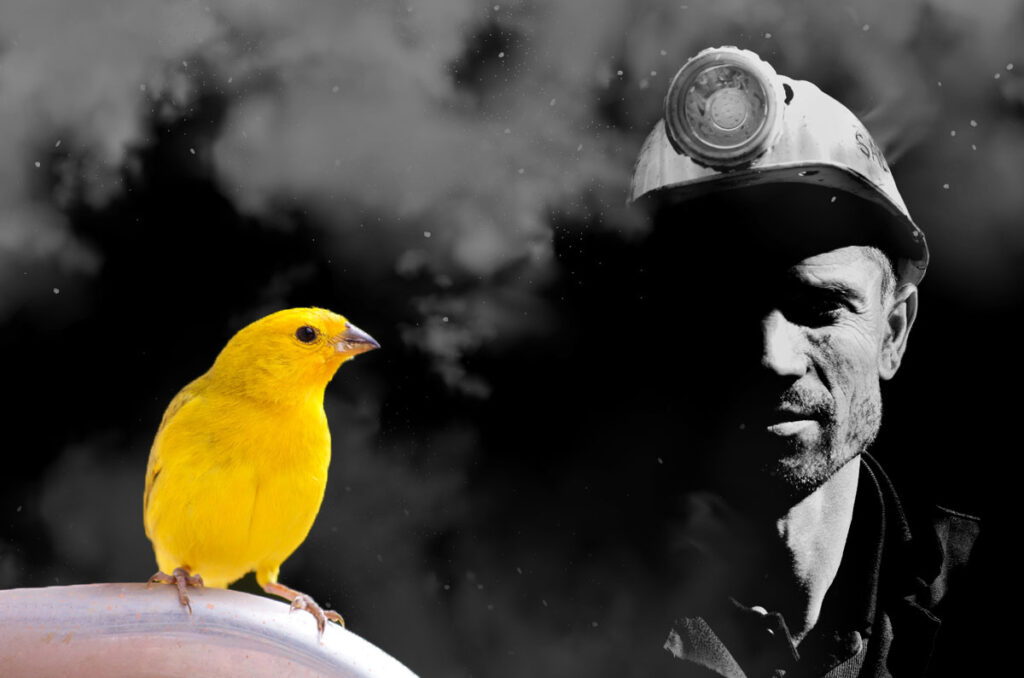It’s no coincidence that the DustCanary brand has strong links to the canary’s traditional role in mines. The recognised phrase ‘a Canary in the Coalmine’ which refers to early indicators of potential hazards is as relevant, if not more, today as it was from around 1911 when miners started carrying Canaries into the mines.
Used as recently as 1986, these small yellow finches having increased sensitivity to carbon monoxide and other poisonous gases thus reacting more quickly than humans, provided valuable advanced warnings of potential toxics in the air. Any sign of distress from the Canary clearly indicated conditions underground were unsafe and miners could be evacuated from the pit. Oxygen released into the Canary cage would revive the birds.
Technology eventually lead to the phasing out of this practice in Britain’s mining pits where the introduction of hand-held electronic detectors included a digital reading which alerted miners to the extent of poisonous gas presence. Miners at the time were said to be saddened by developments, some missing the companionship as often the canaries were treated as pets, although accepting of the inevitable progress.
In the same way that Canaries fulfilled a vital role for workers in detecting unseen dangers such as carbon monoxide which is colourless, odourless and tasteless, DustCanary samplers and monitors can detect invisible respirable dust. Recognised as a particle size which can cause respiratory disease, this dust is invisible under normal lighting conditions and small enough to be inhaled deeply into the lungs.
Utilising patented technology developed by the Defence Science and Technology Laboratory (Dstl) and the University of Hertfordshire represents a major leap forward in air quality measurement. This game-changing technology enables the replacement of cumbersome monitoring equipment with advanced, lightweight, wearable devices that provide detailed real-time information about levels of dust particles in the workplace to provide enhanced protection for workers.
The ’electronic’ DustCanary protects workers in industrial and construction sites from the long-term dangers of exposure to respiratory dust with a similar purpose to the ‘bird’ Canary which protected the miners from short-term exposure to carbon monoxide. The ‘Canary’ legacy continues to reduce worker’s exposure to harmful invisible gas and dust.
Find out how the new technology behind DustCanary’s samplers and monitors can help to protect workers’ health.

